Dene Holes found in Rainham, Kent
A number of 'Dene Holes' have been discovered in different locations in the Rainham area. Their true origins are not known, but there is speculation that they may have been chalk mines, underground storage for grain or for shelter from Danish invaders, hence 'Dane holes'. The basic design consists of a narrow shaft cut straight down until it widens into a larger chamber. Their age is uncertain, but some were still being dug around a hundred years ago, while some apparently show marks indicating that they were dug with picks made of bone, supporting the view that in some cases their origin may pre-date the Romans.
A dene hole was discovered in Twydall Lane in 1931 by Mr Harlow. He excavated the site and produced plan of the dene hole shown here. Niches were found at points A and B which were about 9 feet in height but not reaching the surface. These shafts were blackened with smoke so it may be that they were chimneys for torches or fires.
There is still a dene hole that you can see at Capstone Country Park near Hempstead.
In 1980, several dene holes were discovered during the construction of the Platters Farm estate off Marshall Road. The pictures show the dene hole at the junction of The Goldings and The Platters. This was excavated by the builders and refilled prior to construction of the houses, but after the road had been built.
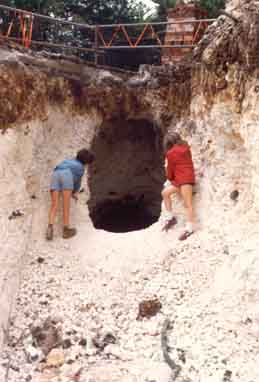 |
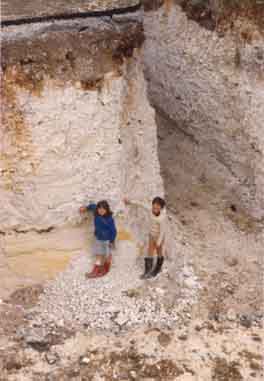 |
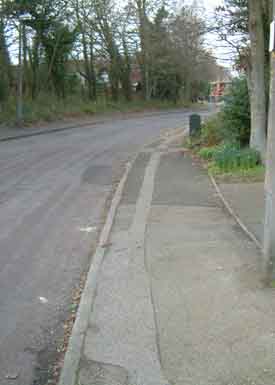 |
|
| Dene Hole discovered in Rainham Kent, July 1980 | Trench that discovered Dene hole running parallel to road | Dene Hole After Excavation |
The same Dene Hole location
The Goldings/Platters junction facing towards Marshall Road 2004 |
See the following links for more information.
http://47.1911encyclopedia.org/D/DE/DENE_HOLES.htm
http://www.glias.org.uk/news/167news.html#O
http://www.1911encyclopedia.org/Dene-Holes
Details of Dene Holes from "Off The Beaten Track-A Short History of Bredhurst, Wigmore and Hempstead" by Geoffrey Hutton. Published by Meresborough Books 1993, available from Rainham Bookshop.


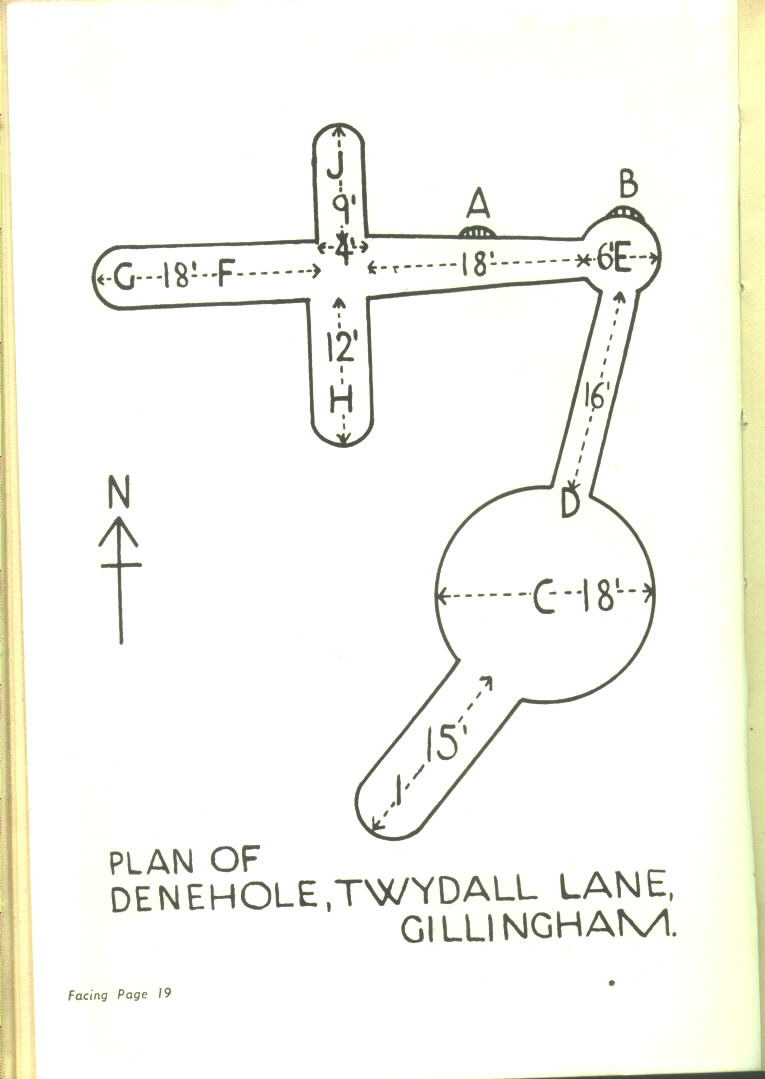
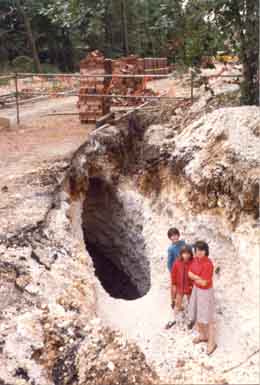






































































































Comments
Hello, we lived at 7 South Bush Lane before Richard Mallet moved there many years ago. The short-sighted pig farmer was old man Roger Wanstal, his grandson David still lives there. Ma Wanstal was famous for her baking and jam and I remember her kitchen was always full of steam and Roger's pipe smoke. Ma Wanstal was a portly lady with a jolly disposition while Roger was lean and wirery, and a little quieter. They were wonderful, hard working, kind and caring people. Back in the day they'd go around schools and barracks in their old van collecting foul-smelling left-overs from canteens (swill) to feed the pigs. There would be clouds of starlings around the bins on the farm which us lads would shoot in swathes to sell to the Hungarian chef at The Blue Danube restaurant on the Watling Street near Teynham. So many memories of a wonderful upbringing. The story of Fred Chapman discovering the Dene Hole next to Spade Lane has fascinated me all my life and that's how I came to discover this conversation while researching Dene Holes for my son's school project. Fancy that!...
Have some amazing memories on that farm
Thank you for the reply, I went up the lane today with my daughter and spoke to the man that lived at number 7 and he said they used to be small holdings. Can you please let me know who that resident is because I'd really like to find out more because it's part of my memories.
RSS feed for comments to this post